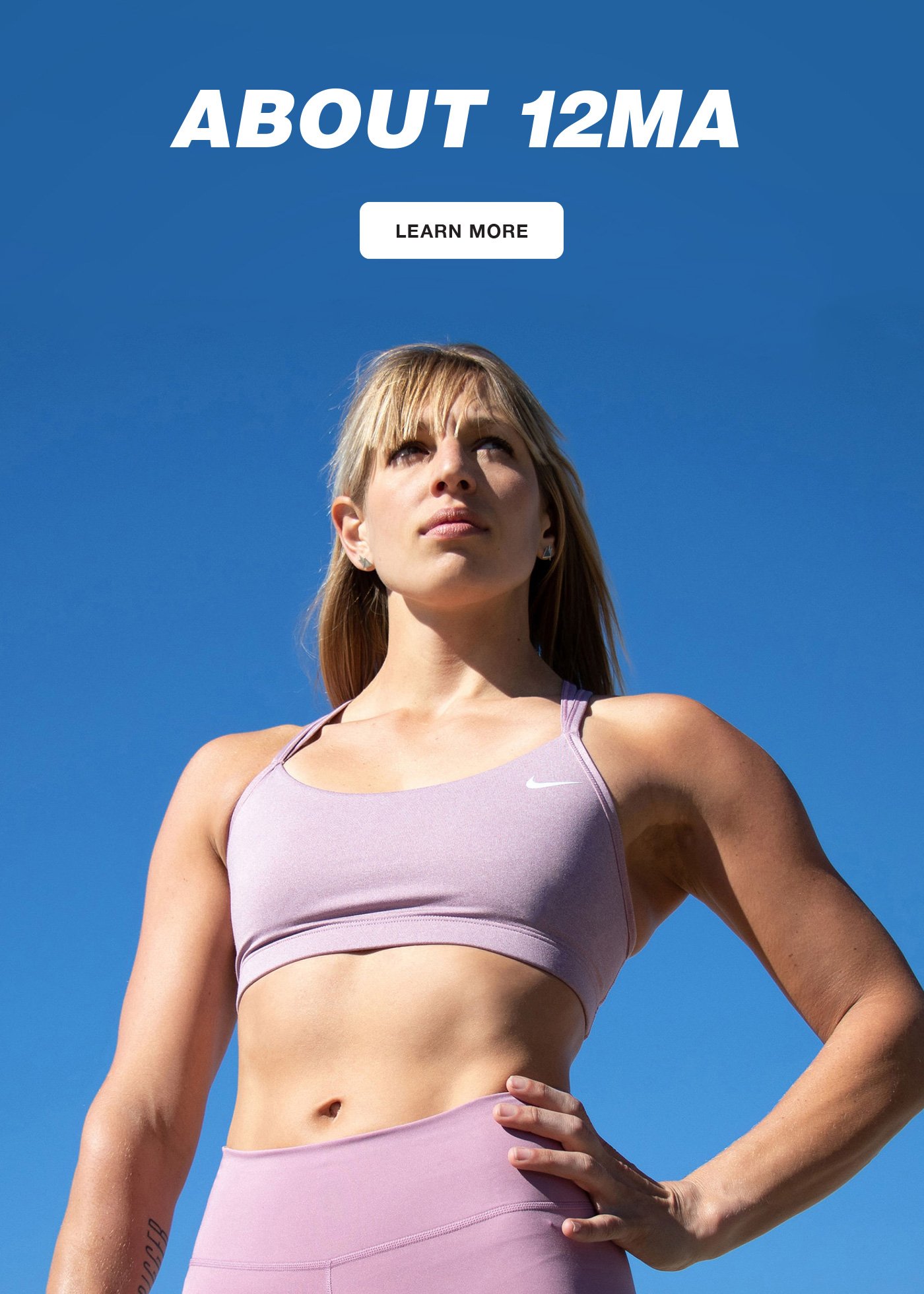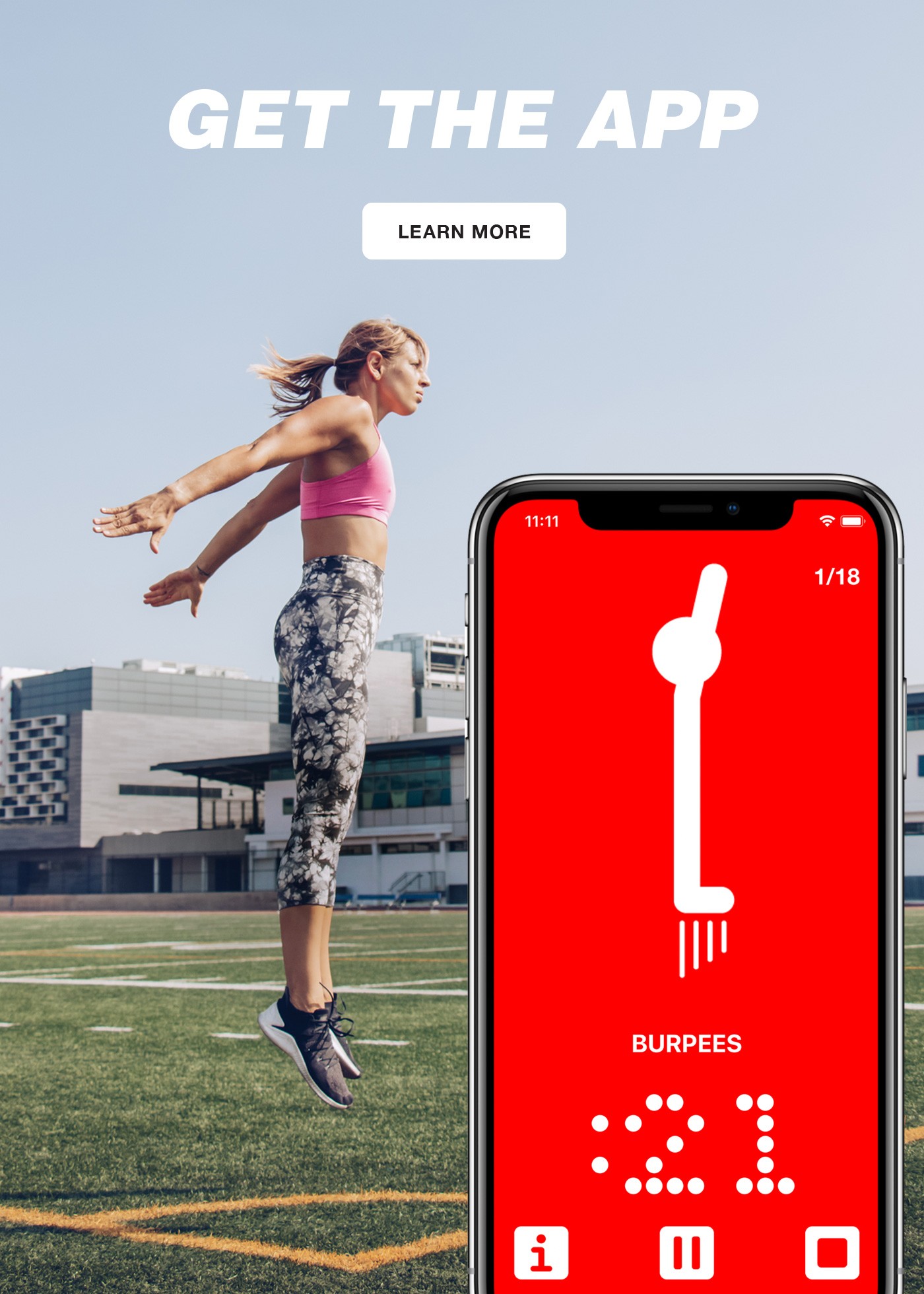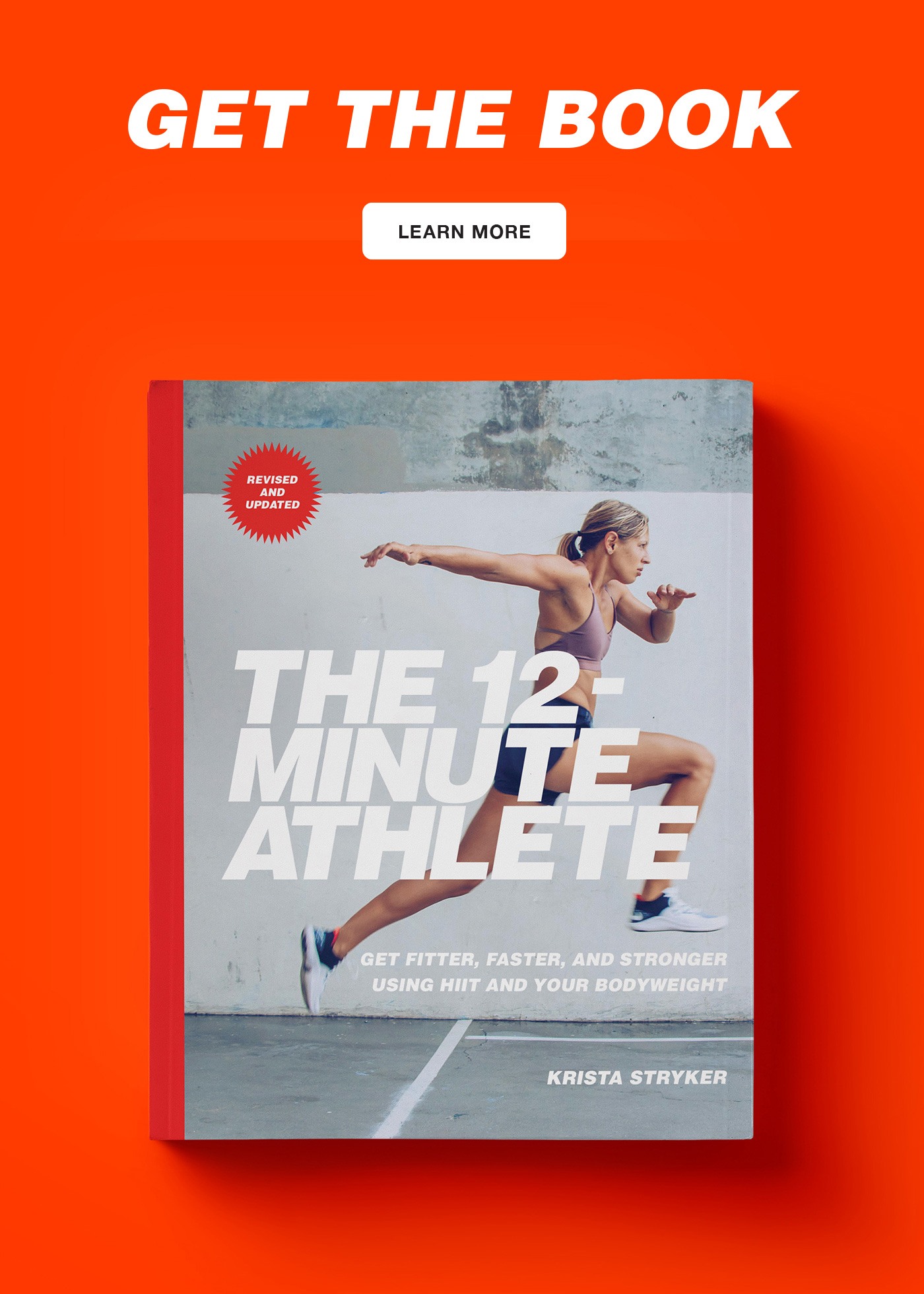
This post is sponsored by the U.S. Army Reserve
When I think of the U.S. Army Reserve, I think of some of the fittest people on earth.
Striving to be the world’s best and most versatile team, the Army Reserve Soldiers train incredibly hard both mentally and physically and are continuously learning and adapting to an always changing world. Bringing together their diverse skills and backgrounds, they rely on teamwork, courage, and strong leadership skills to be able to rise to any challenge at any time.
So I was more than a little curious (and intimidated) when I was invited recently to train with the Army Reserve as part of their partnership with Tough Mudder.
If you’ve never heard of it before, Tough Mudder is an obstacle course designed to test your physical and mental strength with infamous challenges like the Ring of Fire (where you literally have to jump through a ring of fire) and the Dead Ringer (where the goal is to sideways climb along a series of ascending and descending pegs while high up in the air). Yet unlike most races, Tough Mudder is a team-oriented course focused on the premise that individuals are stronger both mentally and physically as a team—which is exactly why it’s such an awesome matchup with the Army Reserve.
So in partnership with the Army Reserve, I’m excited to bring you a play-by-play of my day training at the Army Physical Fitness School in Fort Jackson, South Carolina. Here is a super honest breakdown of my experience, including my shortcomings as well as successes:
Part 1: Tactical Athlete Assessment Part #1
6:05 am: I’m up. Ouch, this feels early, having just flown in from the West Coast the night before. But I went to bed as early as I possibly could, so I think (and hope!) I’ll make it through the day without nodding off. I make some oatmeal using the hotel’s coffee maker and chug a shaker bottle filled with ice cold water, greens powder, and whey protein and in hopes of keeping my energy up throughout the day. Sgt. 1st Class Solomon, 2010 Reserve Drill Sergeant of the Year, picks me up at 6:30 and we’re on our way.
7:00 am: We arrive at the Army Physical Fitness School after a quick coffee stop and a lot of driving around what seems like a complete maze. Sgt. 1st Class Solomon tells me that many of the roads are closed off this early so that the Soldiers can run on the roads without worrying about being hit by a car. This is my first time on an Army Post, and I’m fascinated by all the buildings and Soldiers wearing reflective belts running in the still pitch-black morning.
 Major Adams meets us there, and we step out of the cold into one of the most amazing gyms I’ve ever been in. It’s a functional fitness lover’s dream, with pull up bars galore, enough squat racks for a dozen people, and every fitness or mobility tool you can imagine.
Major Adams meets us there, and we step out of the cold into one of the most amazing gyms I’ve ever been in. It’s a functional fitness lover’s dream, with pull up bars galore, enough squat racks for a dozen people, and every fitness or mobility tool you can imagine.
After a few minutes of admiring the space, we get started right away with Part 1 of the Tactical Athlete Assessment. These tests are a way to discover the strengths, weaknesses, and overall fitness level of Soldiers, and I’m definitely a little intimidated. But I’m ready.
We start with the Functional Movement Screen lite, which is basically a quick test to make sure that I will be able to do the movements in the rest of the assessments for the day without hurting myself. The Soldiers who attend the Master Fitness Trainer Course also participate in this screening as well. It consists of a simple overhead squat with a PVC pipe, a Shoulder Mobility Assessment where I have to reach one arm over my shoulder while holding a fist and touch it with my other fist, and a hamstring stretch test. I’m happy to say I passed all of these with flying colors:
Squat: 3/3
Shoulder Mobility Assessment: 3/3
Straight Leg Raise: 3/3
Total score: 10 (I received a bonus point for getting full points on all three)
Next, we move on to the more strenuous part of the assessments, which includes four parts: standing long jumps, T-test, 300 yard shuttle run, and max pull ups (normally it would also include a swimming test but we don’t get to that today for logistical reasons).
Standing long jumps: I do some dynamic stretching and a few air squats to get warmed up, then I have a couple of practice tries before doing my best out of three standing long jumps. I feel it went pretty well, but wish I’d practiced them ahead of time because I definitely feel like I could have probably jumped further with better practiced technique. My max is 76″, which puts me short of the elite athlete status I would have gotten at 102″, but still in an athletic range.
My score for standing long jumps: 7/10
T-test: Sgt. 1st Class Solomon sets up cones in a T-shape for this next assessment. The goal is to sprint forward, touch the bottom of one cone, laterally step left, touch another cone, laterally step right, touch that cone, come back to the center, and sprint backwards. Once again, I don’t feel totally prepared for this one and I think my technique is off because I am surprised at how poorly I do with a best time of 12.88 seconds. I have no doubt if I practiced for a day or two I’d get a much better score, and Sgt. 1st Class Solomon agrees with me.
My score for the T-test: 5/10

300 yard shuttle run: We step outside to a gloomy morning for the running portion and Sgt. 1st Class Solomon sets up two cones 25 yards apart. For the test, I have to run back and forth six times as fast as I possibly can, and get two tries at it with a five minute rest in between. I ask if there’s a reason for the cones rather than just doing one long sprint—indeed, they want to test the power athletes have after stopping and coming out of a turn.
I have butterflies in my stomach as she starts the timer. On the first try, I slip twice on the wet grass which slows me down a little. I feel pretty well conditioned despite never running, but I’m still a little shaky and gasping for air by the end of the first sprint. My second try puts me at an average of 68.11 seconds, which is just three seconds off from receiving the maximum score.
My score for the 300 yard shuttle: 9/10

Pull ups: Back inside now, next up is max pull ups. I ask if the grip is supinated (as with chin ups) or pronated (as with pull ups), secretly hoping for the chin up version. Unsurprisingly, Sgt. 1st Class Solomon tells me it’s pronated, and for a good reason—if a soldier needs to pull him/herself up over an obstacle, it’s almost always going to be while using a pronated grip.
I accept that logic as making total sense, then bust out five pull ups before fatiguing. Since Sgt. 1st Class Solomon tells me the most she normally sees from females is usually three (and since I never used to be able to do even a single pull up), I’m happy enough with this, although I have no doubt I could get a few more if I trained hard for it.
My score for pull ups: 7/10
7:55 am: That’s it! I’m done with Part 1 of the Tactical Athlete Assessment. I have a few minutes before my next thing, so I scarf a protein bar and chug half my water bottle to keep my energy up. I can tell I’m going to be eating a lot today—good thing I packed enough food for at least five people.
Part 2: Sitting in on the Master Fitness Trainer Course

8:00 am: Soldiers come in out of the pouring rain (I’m lucky to have done the running portion of the assessment before the rain began) and we quickly get started with the Free Weight Training portion of the Master Fitness Trainer Course. The class is part of a two-week training program for Soldiers, each of whom has at least four years of experience and has been handpicked by their commanders as promising leaders. The Soldiers attending the course come from all over the Army, and will learn about all sorts of topics including nutrition, strength training, and even running technique that they will then go back and teach their individual units.
I’m sitting in on day two of their program, and today we’re focusing on three primary strength lifts; the squat, deadlift, and bench press. Since I don’t do much heavy lifting these days, tending to stick to bodyweight exercises, it’s fun to do something different and watch as the Master Fitness Instructors teach the students proper technique, safety, and progression/regression of each exercise. I really like how in depth the instructors get about the exercises and how the goal is always to get the most athletic carryover (as opposed to being focused on appearance). The students are lucky to have such awesome coaches.
Squats: The Master Fitness Trainers go through a very thorough demonstration of the basic squat, starting with air squats, then moving onto overhead squats with a PVC pipe, goblet squats, and barbell squats. Rather than pushing the classic 90° squat that so many trainers promote, I’m happy that they advocate for a full, deep squat for maximum athletic functionality. We break up into groups of four, practicing barbell squats, banded squats (to help with the sticking point), and even some crazy looking squats with a kettlebell attached to a band hanging from each side (to work on stability).
With all the air squats, plyo squats, and pistols I do on a regular basis, I felt pretty good about these despite never really doing heavy weighted squats.

Bench Press: I’ll be honest, it’s been a long while since I’ve bench pressed. Everyone naturally gravitates to different things, and personally, I just find push ups much more interesting and love all the challenging variations of the classic bodyweight exercise. Still, the bench press, when performed correctly, is a fantastic full body exercise and I like that the instructors emphasize that athletes should be engaging not just their chest and arm muscles but also their lats (back muscles), quadriceps, and forearms for maximum athletic transfer.
Deadlifts: Sgt. 1st Class Liela Cowhig, training for her first powerlifting competition in December, demonstrates a beautiful, perfectly executed deadlift for us. I have no doubt that she could lift a lot more weight than she’s showing us, despite her small stature. We practice these for a while, and although I’m no deadlift regular, they feel pretty good. After all, what could be more functional than being able to pick something up off of the ground? We try a few sumo deadlifts too which feel very awkward and much less functional.

11:00 am: We have a short break, and I scarf a small handful of trail mix and a banana and down more water before getting back out there.
11:05 am: We moved through the main exercises fairly quickly, so we take a look at a few other lifts including the military press and power clean. Considering I used to have trouble even lifting my suitcase above my head in an airplane, I can definitely understand the usefulness of the press, which is as simple as pressing a barbell or other weight above your head. However, I much prefer the push press version where you can use your legs slightly to give you more momentum and power. We also look at the power clean, a lift that allows you to get in position for Olympic lifts like the clean and jerk.
12:00 pm: Time for lunch! I’m surprisingly not as hungry as I thought I would be (maybe I’m just so tired at this point it’s dulling my hunger), but I scarf down a green salad with chunks of apple, walnuts, and some crumbled cheese so that I can keep my energy up but not get too full–the day isn’t over just yet.
Part 3: Tactical Athlete Assessment Part #2

12:45 pm: It’s time for Part 2 of the Tactical Athlete Assessment. I don’t really know what to expect from this one, since it involves heavy lifting and a super scary part at the end (more on that soon). But I’m as ready as I’ll ever be.

Squat: We start with the Back Squat Assessment, where the goal is to perform 10 reps of my bodyweight, approximately 135 pounds. I’m a little shaky, but I make all 10 reps, so I’m happy about that.
My score for the squat: 10/10
Bench press: Next up is bench pressing. I’ve been doing a lot of push up variations lately, including a lot of explosive push ups where I’m getting noticeably stronger, so I’m not overly nervous about this one. However, when I see the amount of weight put on the barbell—we’re supposed to perform five reps of our bodyweight—I’m immediately doubtful. I take a deep breath and try for the first rep, but it’s obviously not happening. We end up dropping it to 95 pounds, where I’m able to squeak out five reps. I’m not so happy about this one.
My score for the bench press: 7/10
Deadlift: Last of the lifts is the deadlift, where the goal is to perform 10 reps of one and a half times our bodyweight. I’ve been doing a lot of stand to stand bridges lately, and between those and pull ups, my back has been getting pretty strong. Yet it’s not enough to get 10 full reps of 185 pounds—I make eight, then my form starts to deteriorate so much I decide to call it quits before I hurt myself.
My score for deadlifts: 8/10

Ninja Warrior training apparatus: This is the last test of the day, and I’m not going to lie, I am super nervous about it. It’s tall and intimidating, and Sgt. 1st Class Solomon can name only three women who have made it across. I train pull ups and grip strength quite a bit though, so I’m less worried about lacking the strength to make it across as I am about my technique. So I am incredibly grateful when Staff Sgt. Adam Pahovey gives me some strategy advice. He says there are a few ways to do it, but that personally he prefers going backwards on the incline portions of the rigger since you don’t have to swing quite as much to do so.

I take a deep breath, jump up to the first bar, then immediately fall back down. I’m not too discouraged (yet), so I decide a pull up on the first bar is the best strategy, and I’m off. I go backwards up the first incline, which is actually not as hard as it looks. I gain a bit too much momentum on the way down, but catch myself and make it up the next incline and straight portion.
One pull up at the end, and I made it! I’m pretty proud of this one—there is no way I would have ever imagined being able to complete something like that just a few years ago. (Make sure to check out my Instagram or Facebook page for the full video of this.)
2:00 pm: We’re officially done with the training for the day, and right on cue, I’m absolutely starving. Time for more food and nap time.
Driving back to my hotel with Sgt. 1st Class Solomon, I reflect on my day, still a little giddy that I was able to make it across the whole Ninja Warrior rigger. I’ll fully admit that I didn’t really have any idea of what to expect going into the day, but I left feeling incredibly grateful for the experience, secretly wishing I could have stayed for the entire two weeks of the training. After all, you guys know I’m always up for a challenge.
Want to Know More?
If you’re interested in learning more about the Army Reserve, make sure to check out their website or go here to find an Army sponsored Tough Mudder race near you and connect with a Soldier.
And stay tuned for Monday’s post where we’ll be doing a workout to help you (and your friends) prepare for a Tough Mudder race!


